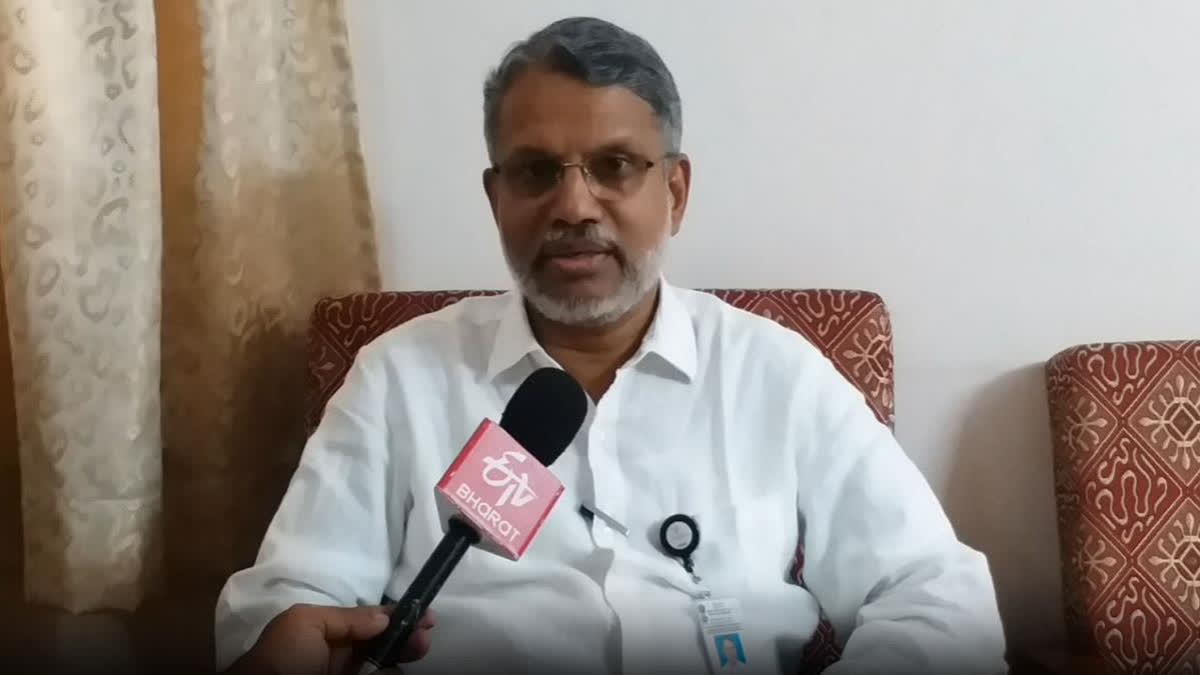Thiruvananthapuram: The Indian Space Research Organisation's (ISRO) Chandrayaan-3 mission is set to make history as it is set for a soft landing on the lunar surface on August 23. After a successful landing, the ISRO aims to demonstrate rover roving on the Moon and to conduct in-situ scientific experiments.
Chandrayan's Vikram lander has been scheduled to land at the South Pole. It will land in the 69.37,32.35 region of the South Pole. The current landing site has been scheduled at 100 km away from the area where the Chandrayaan 2 failed at the last moment in 2019.
Speaking to ETV Bharat, Padmakumar E. S., Director, ISRO Inertial Systems Unit (IISU) explained the reason behind the plan to land the LVM3 rocket in the south pole region of Lunar Surface. Padmakumar said that the south pole regions are frozen and there is a lot of scope to explore them.
"Most of the lunar missions were targeted around the equator. The Equator is well-lit compared to the South Pole. South Pole regions are frozen, so we think there is a lot of scope for exploring the region, especially the upper crust mantle. We have to explore there as a large number of factors are there to study. We will be able to gain further information about the origin of the moon and even the solar system," Padmakumar told ETV Bharat.
"The conditions are difficult to land in the South Pole region. However, we have decided to land at the south pole exactly at 69.2 degrees south. We will explore for 14 days and payloads will study a variety of aspects including the formation of the Lunar surface, the elements present there, and surface chemical combinations. These inputs will shed light on information on the formation of the moon," Padmakumar said.
The lunar south pole is the southernmost point on the Moon. It is of special interest to scientists because of the occurrence of water ice in permanently shadowed areas around it.
Speaking about the duration of the mission as compared to Russia's Lune 25, the top ISRO scientist said, "We have a proven launch vehicle, LVM3 rocket which helps us to lift the highest mass that we can carry to the moon and do the research there. We are carrying a number of payloads and rovers for our exploration and this is the only way we have to carry out experiments using the given resource. It is a well-thought-out decision to go like this. We haven't made any changes to our reliable launcher LVM3."
"Taking a longer time will not affect performance. It will give us time to check each step, validate, verify and carry out each step perfectly. We are moving steadily with each step. We have to make sure each step is carried out perfectly. The mass carried to the moon is our greatest challenge. It gave us the greatest opportunity for testing our capabilities. For a direct ascend and transit mission like Luna 25, it requires a bigger rocket. It will give less time for any verification. There will not be much time for corrective steps," Padmakumar added.



